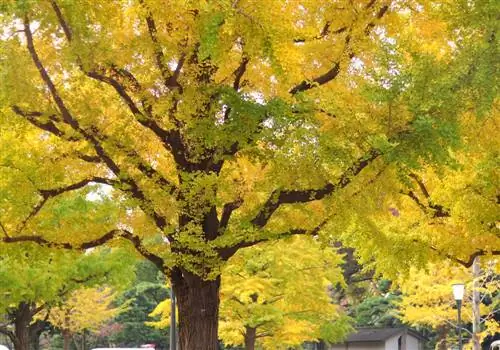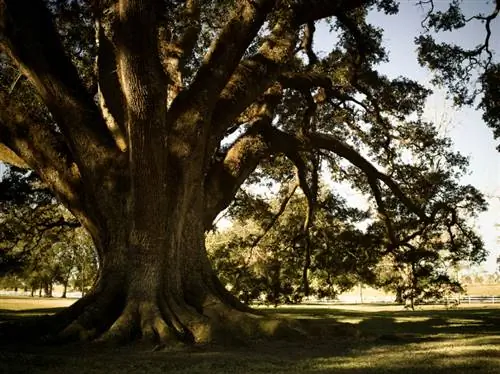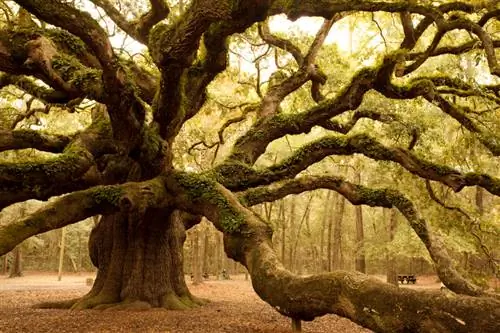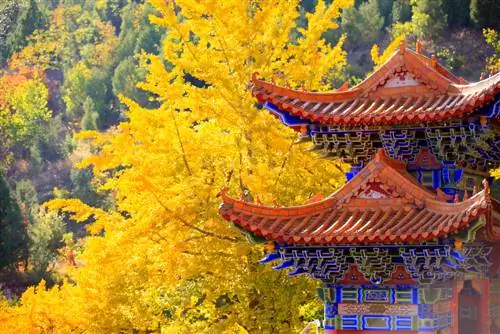- Author admin [email protected].
- Public 2023-12-16 16:46.
- Last modified 2025-01-23 11:22.
Ginkgo biloba originally comes from China, but is now increasingly planted as an ornamental and street tree all over the world. The species came to Europe in the 18th century, so that the oldest specimens are around 250 years old.

Where is the oldest ginkgo tree in Germany?
The oldest ginkgo tree in Germany could be the ginkgo in Rödelheim, which was planted around 1750 and is now a natural monument. Another option is the ginkgo in Harbke Castle Park, which was probably planted around 1758.
How old is the oldest ginkgo tree in Germany?
In Germany, several ginkgo trees claim to be the oldest. The title cannot be awarded so easily because the planting dates are uncertain. However, these two specimens have a good chance:
- Ginkgo in Rödelheim: probably planted around 1750, today has the status of a natural monument
- Ginkgo in the Harbke Castle Park: probably planted around 1758, the castle park is part of the “Garden Dreams of Saxony-Anh alt” due to other rare trees
Other specimens, for example in the Bergpark Wilhelmshöhe, in the Jena Botanical Garden and in Weimar, were planted at the end of the 18th and beginning of the 19th century. The Weimar specimen is also known as “Goethe Ginkgo”.
Where are the oldest ginkgo trees in Europe?
The ginkgo tree came to Europe around 1730 after European travelers had recently “discovered” the species in Japan. The oldest European specimens are in Utrecht, Netherlands (probably around 1730) and in the Royal Botanic Gardens in England (probably around 1754). There are also specimens in other European countries such as Italy, Slovakia and Belgium, which are said to have been planted between 1750 and 1780. Here too, the years should be treated with caution as they cannot be verified correctly.
How old is the oldest ginkgo in the world?
Ginkgo trees can live for more than 1000 years, with the oldest specimens all being found in China. In the western Chinese province of Guizhou there is even a male individual who is said to have already reached an impressive age of around 4,500 years. Numerous other specimens in China, South Korea and Japan are up to 1,300 years old and are found primarily in Buddhist temple complexes - Ginkgo biloba is traditionally a temple tree in East Asia. However, it is controversial whether there are still natural populations of the species.
Why is the ginkgo also called a “living fossil”?
The famous naturalist Charles Darwin already described the ginkgo as a “living fossil”. In fact, Ginkgo biloba is the oldest tree species in the world still alive today. Ginkgo trees existed as early as 290 million years ago, with great biodiversity between the Jurassic and Cretaceous periods. According to current information, around 17 different genera have been identified, but - with one exception - they died out in the middle Cretaceous. Ginkgo biloba represents a kind of link between coniferous and deciduous trees and has characteristics of both groups.
Tip
Propagate Ginkgo through cuttings
Would you also like to plant a ginkgo in your garden? Then you can try a cutting, which is ideally cut in June or July and should be around 20 centimeters long. Keep the substrate moist and place the plant pot in a bright and warm, but not directly sunny place.






